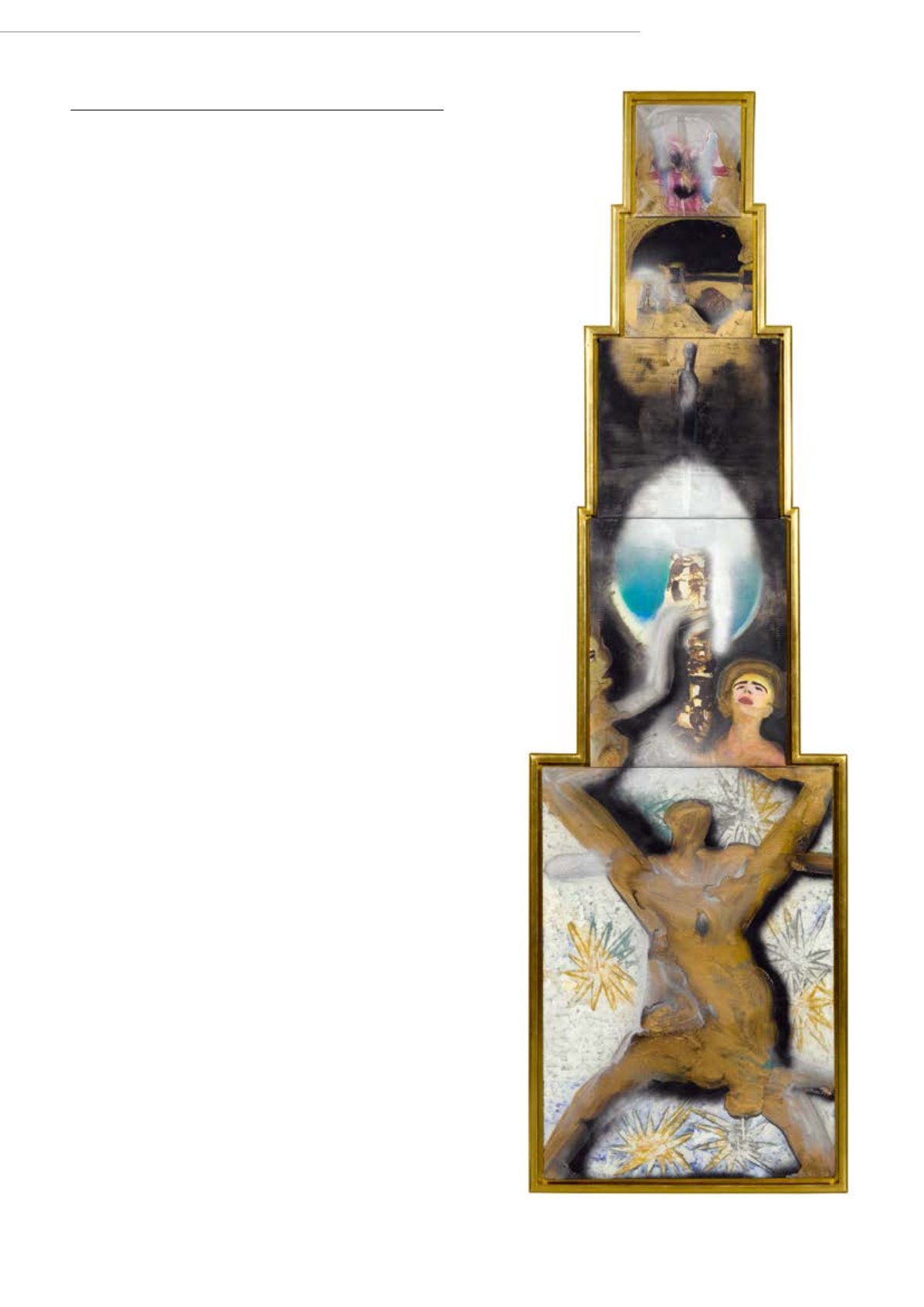

| 70
PostWar & Contemporary
3465*
FRANCESCO CLEMENTE(Neapel 1952 - lives and works among others in New York)
Stupa. 1991.
Oil, acrylic, spray and pastel on canvas.
362.9 x 97.8 cm (5 canvases).
Provenance:
- Larry Gagosian Gallery, New York.
- Acquired from the above by the present owner; since then
privately owned.
Francesco Clemente, born in Naples in 1952, lives and works in
New York, Rome and in India today. Alongside Chia, Cucchi and
Paladino, he is considered one of the exponents of the Italian
„Transavanguardia“, although he himself is not fond of being
associated with specific art movements. In 1970 he begins to
study architecture in Rome, although he does not complete his
studies. Already in 1971 he has his first one-man show at Galle-
ria Valle Giulia in Rome. Shortly afterwards he travels to India and
Afghanistan for the first time, together with the artist Alighiero
Boetti amongst others.
In 1981 Clemente emigrates to New York, where he quickly
makes friends with Jean-Michel Basquiat, Keith Haring, Kenny
Scharf and other major figures of the art scene. In the 1980s
he begins to work in increasingly large format in oil, and also
experiments with other media and techniques. His work is
strongly influenced by various foreign cultures, especially that
of India. Spirituality, various religions, symbolic self-portraits and
an examination of his own position in the world, are fundamental
themes and points of interest in his art. His pictorial language
corresponds fully with his imagination and influences from the
Far East. „My work runs through iconography. It doesn‘t pro-
mote one iconography over another. I carry inside me the idea
that it‘s better to be many than one, that many gods are better
than just one god, many truths are better than one alone.“ (cit.:
F. Clemente in: Francesco Clemente, Exh. Cat., Arts Council of
Northern Ireland, Belfast, 1984).
This work is a fine example of these influences and cultures, with
their multi-layered figures and motifs. „Stupa“ brings to mind
the works of Hieronymus Bosch, with their scenes and figures
which both fascinate and frighten. With Clemente’s works,
fabulous creatures and figures can also be discerned, some
clearer or more detailed than others, but yet more human than
with Bosch. The lower figure is somewhat sketched and appears
to have his arms raised, while on the second canvas the faces
are painted clearly and in detail and are seen to gaze upwards.
Towards the top, the figures are again only hinted at, and at the
very top only a head can be seen, almost a skull, without any
developed features. These very different types of form leave
the interpretation of this work quite open.
The „Stupa“ is a Buddhist monument, which is a symbol of
Buddha and his teachings. Typical for these shrines is that they
taper upwards, which is reflected in the tapered canvases of our
painting.
CHF 40 000 / 60 000
(€ 37 040 / 55 560)


















